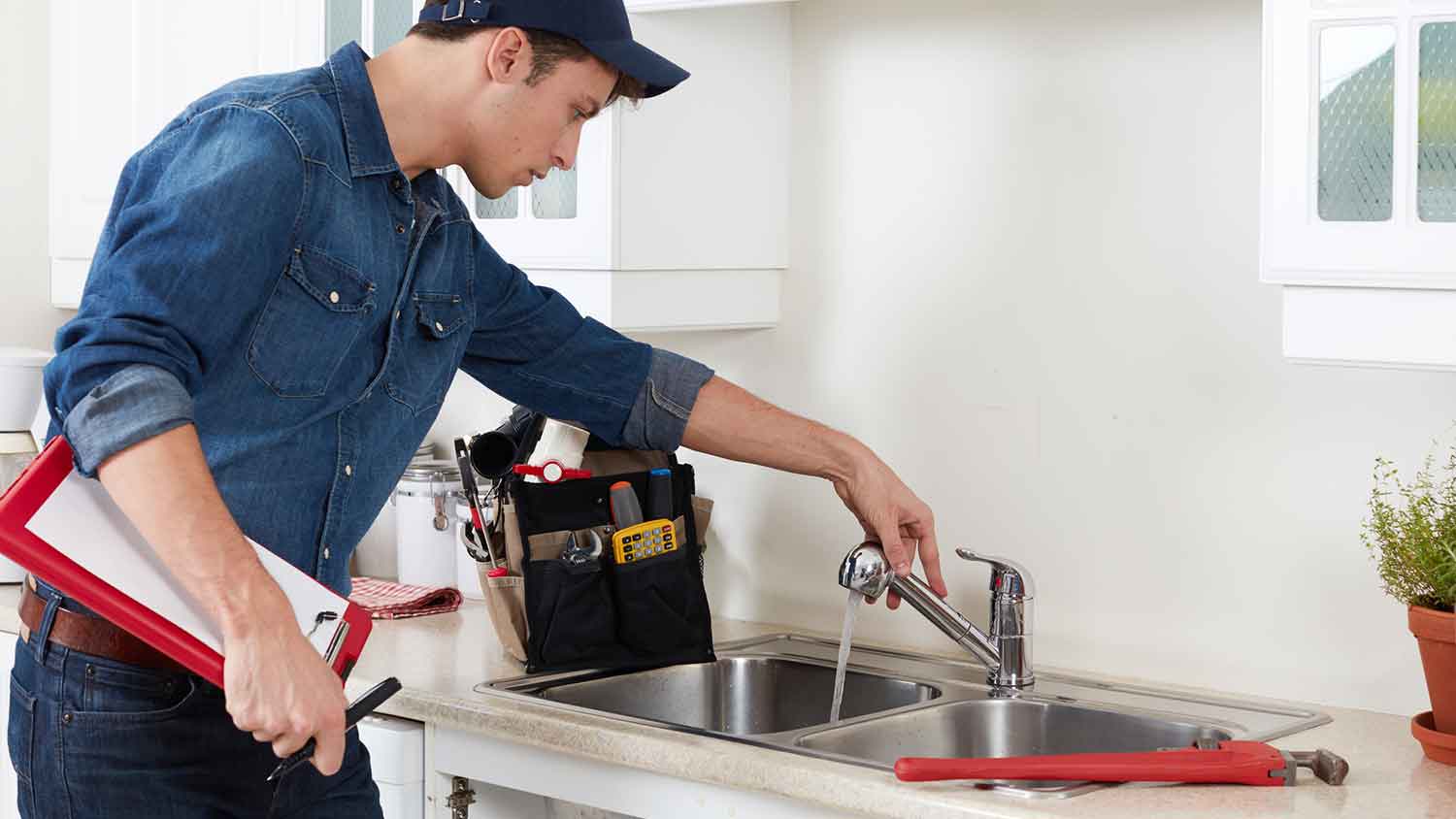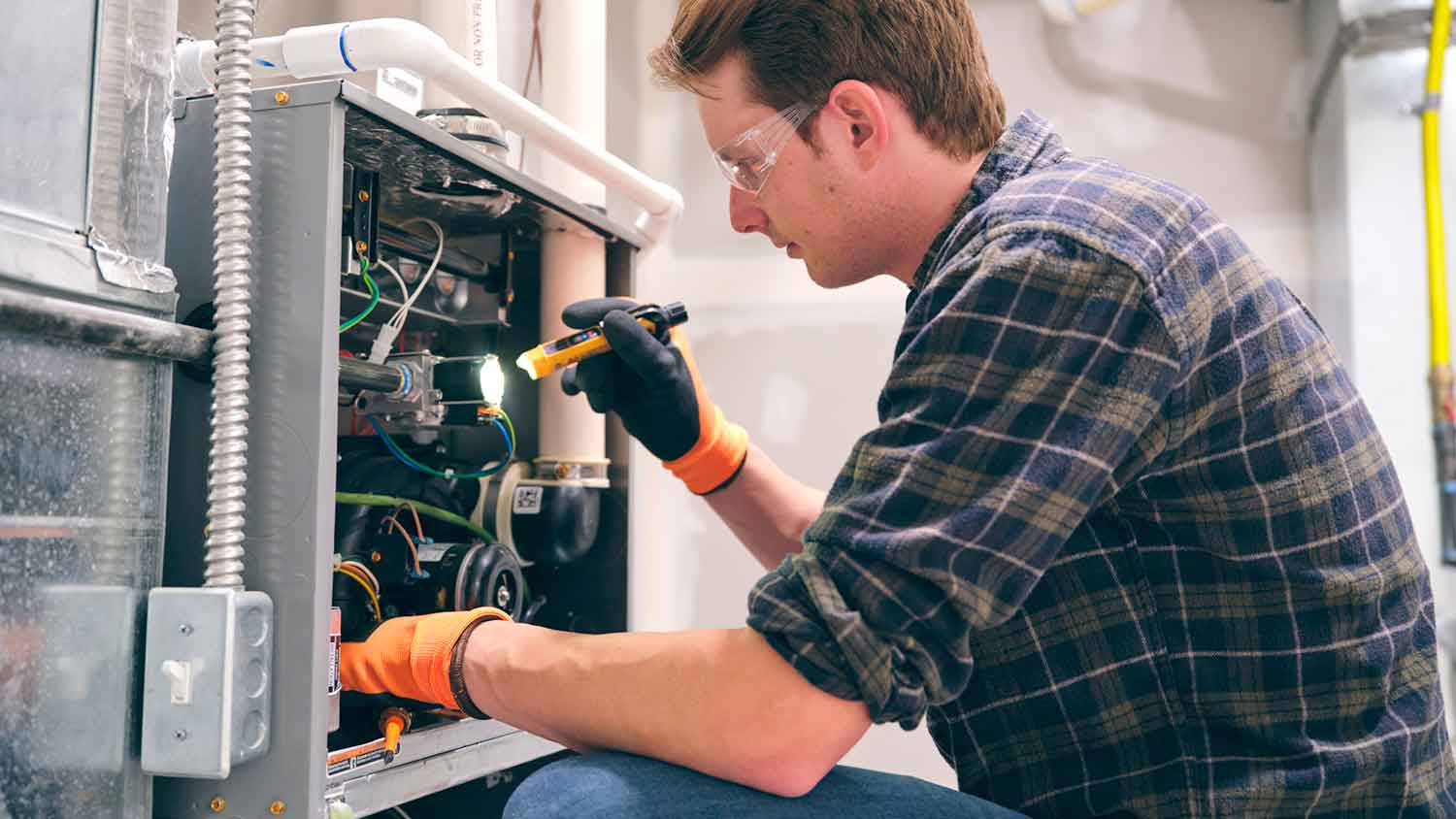The Complete Old House Inspection Checklist for Buyers
Older home red flags to look for


An old house can be beautiful, but there may be older appliances and damage that come with a historic house, as well. From general wear and tear to outdated building techniques, an older home can also pose safety risks that you may need to address before moving in.
A professional home inspector can take a look at a beautiful old house and find any red flags or unsafe features in your potential new home. Do some preliminary research and follow along with the professionals using our quick room-by-room checklist so you know what your inspector is looking for.
What Makes Old Home Inspections Different?
Home inspections are a good idea for any house—it’s recommended to get one done every 3–5 years. Inspections are a chance to check that everything is working well and can help catch any concerns before they become costly problems. Home inspections are also common before you buy a property to see a more detailed condition of your potential new home.
A home inspector near you will do a thorough examination of every part of the home. Old home inspections cover all the usual areas, but they also focus on a couple of features that can be common concerns in older builds.
"He found many things that would have been serious trouble down the road. I am so glad I went ahead and did an inspection on this new home because I almost didn’t. It was the best $350 I ever spent!"
- Esther P., Angi customer from Boerne, Texas
Electrical
Homes built earlier than 1950 will often have something called knob-and-tube wiring, a slightly outdated type of electrical wiring. While it’s not mandatory to have this changed, lots of homeowners prefer to have new wiring that’s better regulated.
Electrical inspections will also take a look at your electrical panel, outlets, and light switches to make sure everything’s up to code. They may also look for any hot spots and discoloration that could suggest faulty wiring, and they’ll test your appliances to see how energy-efficient your system is.
An electrical inspection can:
Tell you whether you’ll need to change any wiring
Give you a sense of how much it might cost to rewire part or all of the home
Look at the electrical panel and the outlets to make sure everything’s up to code
Plumbing

Today, copper and PEX pipes are preferred for indoor plumbing. That’s why it’s good to get a plumbing inspection to check:
What type of pipes are in your home
Whether the pipes need to be updated to meet current safety standards
The condition of the main water line to your home
How the indoor and outdoor plumbing is installed
Whether there are any leaks or clogs in pipes
Your water quality
These checks are especially important because repairing or replacing a pipe can be costly, and water damage in the floors or foundation can create other problems later down the line.
Foundation
Many old homes are built on a strong foundation, but there could be cracks under the home that are hard to see. Getting a foundation inspection is a good chance to check:
Cracks in the walls, floor, and support beams
If doors don’t close properly, which can signal a shift in your foundation
Whether there’s moisture from plumbing issues seeping in from outside
Soft spots where the floor is sagging
No matter what the source is, moisture can be a serious risk for mold, mildew, and foundation stability. The good news is if it’s found and addressed quickly, you can often seal up the source, which can prevent it from becoming a deal breaker on a new property purchase.
Heating and HVAC

Many old homes don’t have air conditioning, but some may have updated AC systems, depending on the climate. Get this system checked out with an HVAC inspection that:
Tests how well the heating, cooling, and air conditioning systems work
Determines the age of the HVAC systems
Makes sure all safety mechanisms are working properly
Checks for HVAC cleanliness and maintenance
You may also need to get the central air ducts cleaned, which is often an additional cost during an HVAC inspection.
Boilers are a popular heating system for old homes and can last a very long time. Even though they’re not always pretty to look at (and usually only about 80% efficient), they may only need a quick visual inspection if the system has been well maintained.
Mold and Mildew
Mold and mildew can be a problem in any home, but the age of older builds (and the potential for plumbing issues) makes it especially important in old home inspections.
A little bit of mold in spaces like the bathroom is usually a quick fix, and may even be something you can do yourself with mold cleaner. Mold in spaces like the foundation is trickier and can be a costly repair if you have to call in a professional.
Getting a mold inspection can help assess the extent of the problem by:
Doing a thorough visual mold inspection
Checking for mold inside HVAC systems
Inspecting tough-to-reach spots like inside the walls
Assessing mold and mildew risk in damp spaces
Asbestos and Lead Paint
Homes built before 1980 have a higher risk of asbestos, and those built before 1978 can have a risk of lead paint. If you’re buying a home, there’s a disclosure sheet that the previous owner fills out where they’re obligated to tell you if they know about any of these products in the home.
However, just because they haven’t disclosed it doesn’t mean asbestos and lead paint aren’t present. A qualified home inspector can check for:
Common warning signs associated with asbestos, including old insulation, textured paint, popcorn ceilings, and tiled floors
A sample of concerning materials for official asbestos testing
Old paint and places where lead paint may have been painted over
In the case that asbestos or lead paint may be in the home, you’re required to safely dispose of them when you do renovations, which is usually an added cost. Inspectors may also test for the presence of radon gas, though this isn’t unique to old homes.
The Essential Old Home Inspection Checklist
It’s always worth the cost of a home inspection so you can dive into the details of your home before you make a purchase, but you can save yourself some money by doing a preliminary inspection yourself. Having an old home inspection checklist can help you ask the right questions when you’re visiting a property.
Doing a walkthrough can help you catch any major deal breakers, so you don’t end up paying for a home inspection unless you’re sure the place has potential.
Feel Good About Buying an Old Home
Old home inspections can feel like a lot to manage, but a professional home inspector can take away that stress. They’re qualified to catch all the things that can be concerning and can offer great guidance on potential future issues and repair costs. Once they’re done, they’ll provide you with a home inspection report, so you can review their findings and decide whether an old home is right for you.





- What to Expect During a Home Inspection
- 12 Types of Home Inspections: A Complete Guide
- The Most Important Questions To Ask During a Home Inspection
- What Are the Most Common Home Inspection Issues?
- How to Choose a Home Inspector
- What a Home Inspection Covers: Get to Know Your (New) Home
- 15 Things That Will Always Fail A Home Inspection (And How to Get Them Fixed)
- What Is an Electrical Inspection and When Do You Need One?
- What Does a Home Inspector Look For?
- 8 Home Inspection Deal Breakers That Should Make You Think Twice










